Shockwave Therapy
Treat Deeper. Faster. Easier.1
Deeper.
Shockwave therapy units reach a therapeutic penetration depth of up to 6 cm* for Radial Pressure Wave devices and 12.5 cm* for Focus Shockwave devices. Both types of shockwave devices impact tissue at the surface level down to deeper depths of penetration to treat a wide range of pathologies.2-12
Faster.
On average, shockwave therapy normally consists of 1-6 treatments to help produce effective clinical outcomes.2-12 Typically, treatment times last for 5 minutes1, allowing the treatment to fit into the time constraints of a therapy session and be easily incorporated into an overall plan of care.
Easier.
Shockwave therapy provides easy-to-use transmitter handpieces to effectively treat patients, reducing the wear and strain on the clinician’s hands. The various device handpieces serve to deliver treatments and provide clinician comfort during use.
Two Types of
Sound Waves
Extracorporeal shockwave therapy (ESWT) technology encompasses the use of two distinct forms of sound waves to transfer energy into tissue, resulting in two types of shockwave devices that clinicians can choose to incorporate into their practice.
Focus Shockwaves vs. Radial Pressure Waves
The Chattanooga® Focus Shockwave device generates sound waves via an electromagnetic hand piece with a built-in water buffer, while the Radial Pressure Wave devices utilize a pneumatic/ballistic design. These differences impact the waveforms they produce.13,14
Focused shockwaves have higher peak energy and generate maximal force at a selected depth16. Radial pressure wave devices generate their maximal energy on the skin, which then dissipates as it travels to depth15. Energy levels at depth are dictated by the settings on the machine and the applicator used.
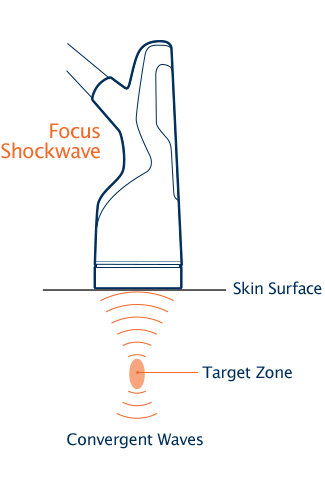
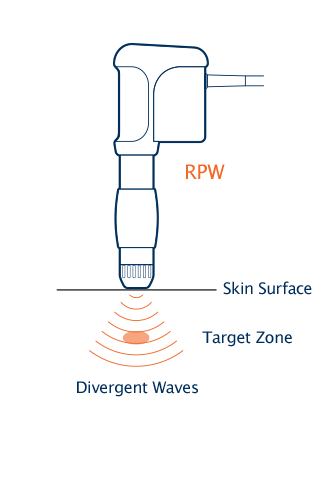
Treatment Applications
Treatment is performed directly on the skin, but is non-invasive. The time alloted for a specific treatment will depend on the area and depth of the tissue being treated. This will normally fall within 2-4 minutes per area treated.
Benefits:
- Short treatment time (a few minutes)
- Precise and targeted application
- Results in a few treatments5-8
- Non-invasive technology
- Alternative to medication
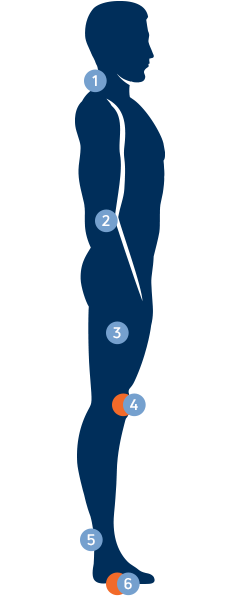
- Myofascial trigger points12
- Disorders of tendons insertions11
- Pulse vibration massage18
- Pain and inflammation in orthopaedic conditions13
- Pulse vibration massage18
- Plantar fasciitis14
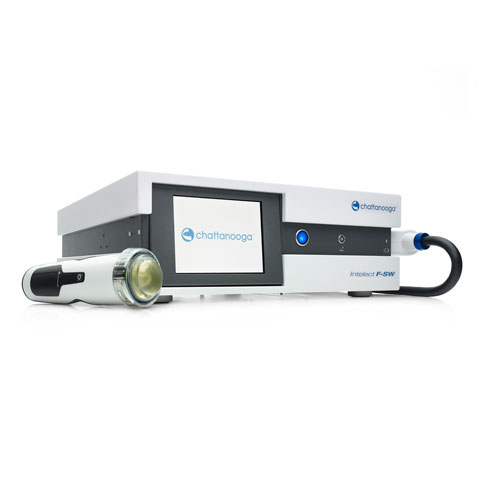
Intelect® Focus Shockwave
Key Features
- LCD touch screen
- Enhanced Energy: 0.01 - 0.55 mJ/mm2
- Optimal focal size for an easy and efficient treatment
- 2 stand-off variations
- Therapeutic penetration depth up to 4.7" (12 cm)**
- Broad Frequency Range: 1 - 8 Hz
- Intuitive and easy to use
- Standoff treatment heads
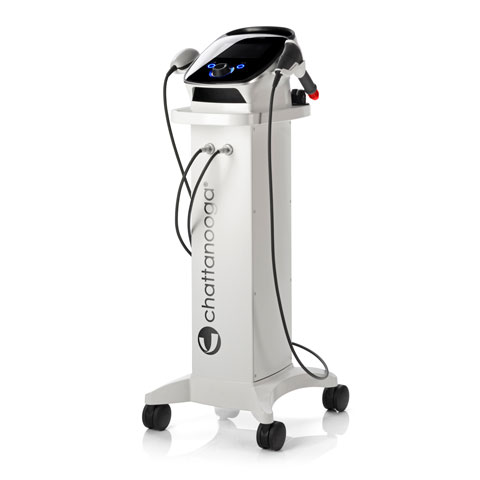
Intelect® RPW 2
Key Features
- Optimal ergonomic design
- Comfort mode
- Easy fit in every treatment room
- Suggested protocols library
- Bluetooth connectivity with windows 10 app
- Extended pressure range from 0.3 to 5 bar
- Large choice of transmitters (option)
- Falcon®** handpiece and transmitters
- V-Actor®** HF handpiece for vibration massage therapy
- Spine-actor®** transmitter kit for paraspinal treatments
- Peri-actor®** transmitter kit for fascia treatments
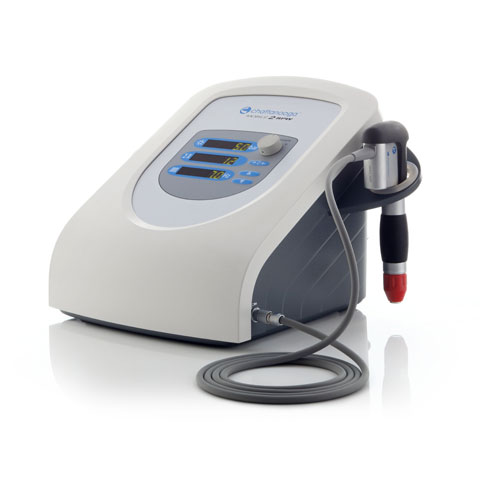
Intelect Mobile® 2 RPW
Key Features
- Compact and light weight, approx.. 20 lbs
- Built-in compressor
- User-friendly experience
- Ergonomic controls
- Illuminated LED display
- Monitors pressure, frequency, and number of pulses
- D-Actor®** applicator and transmitters
- V-Actor®** applicator for vibration massage therapy
Get a Quote
*Data on file.
** Falcon®, V-ACTOR®, SPINE-ACTOR®, and PERI-ACTOR® are registered trademarks of Storz Medical AG
Individual results may vary. Neither DJO, LLC nor any of its subsidiaries dispense medical advice. The contents of this document do not constitute medical, legal, or any other type of professional advice. Rather, please consult your healthcare professional for information on the courses of treatment, if any, which may be appropriate for you.
- As compared to the depth of penetration from manual therapy vs. extracorporeal shockwave therapy; average session of time extracorporeal shockwave therapy being five minutes; decrease is muscle strain from operating an extracorporeal shockwave device compared to manual therapy on a clinician’s hands.
- Cristina d'Agostino M, Craig K, Tibalt E, Respizzi S. Shock wave as biological therapeutic tool: From mechanical stimulation to recovery and healing, through mechanotransduction. Int J Surg. 2015 Dec;24(Pt B):147-53.
- Furia JP, Rompe JD, Cacchio A, Maffulli N. Shock wave therapy as a treatment of nonunions, avascular necrosis, and delayed healing of stress fractures. Foot Ankle Clin. 2010 Dec;15(4):651-62.
- Ciampa AR, de Prati AC, Amelio E, Cavalieri E, Persichini T, Colasanti M, Musci G, Marlinghaus E, Suzuki H, Mariotto S. Nitric oxide mediates anti-inflammatory action of extracorporeal shock waves. FEBS Lett. 2005 Dec 19;579(30):6839-45.
- Gollwitzer H, Saxena A, DiDomenico LA, Galli L, Bouché RT, Caminear DS, Fullem B, Vester JC, Horn C, Banke IJ, Burgkart R, Gerdesmeyer L. Clinically relevant effectiveness of focused extracorporeal shock wave therapy in the treatment of chronic plantar fasciitis: a randomized, controlled multicenter study. J Bone Joint Surg Am. 2015 May 6;97(9):701-8.
- Gollwitzer H, Diehl P, von Korff A, Rahlfs VW, Gerdesmeyer L. Extracorporeal shock wave therapy for chronic painful heel syndrome: a prospective, double blind, randomized trial assessing the efficacy of a new electromagnetic shock wave device. J Foot Ankle Surg. 2007 Sep-Oct;46(5):348-57.
- Ulusoy A, Cerrahoglu L, Orguc S. Magnetic Resonance Imaging and Clinical Outcomes of Laser Therapy, Ultrasound Therapy, and Extracorporeal Shock Wave Therapy for Treatment of Plantar Fasciitis: A Randomized Controlled Trial. J Foot Ankle Surg. 2017 Jul - Aug;56(4):762-767.
- Rompe JD, Decking J, Schoellner C, Nafe B. Shock wave application for chronic plantar fasciitis in running athletes. A prospective, randomized, placebo-controlled trial. Am J Sports Med. 2003 Mar-Apr;31(2):268-75.
- Gerdesmeyer L. Current evidence of extracorporeal shock wave therapy in chronic Achilles tendinopathy.NCBINCBI Logo Int J Surg. 2015 Dec;24(Pt B):154-9. doi: 10.1016/j.ijsu.2015.07.718. Epub 2015 Aug 29.”
- Nedelka T.Mechano-transduction effect of shockwaves in the treatment of lumbar facet joint pain.Neuro Endocrinol Lett. 2014
- Schmitz C. Efficacy and safety of extracorporeal shock wave therapy for orthopedic conditions: a systematic review on studies listed in the PEDro database.Br Med Bull. 2015;116:115-38. doi: 10.1093/bmb/ldv047. Epub 2015 Nov 18.
- Ogden JA. Shockwave therapy for chronic proximal plantar fasciitis: a meta-analysis.Foot Ankle Int. 2002 Apr;23(4):301-8
- Operation & Installation Instructions for Mobile 2 RPW USA (Radial Pressure Wave) REF 2905-US.
- Focus Shockwave Operating Manual (Chattanooga)
- McClure S, Dorfmuller C. Extracorporeal shock wave therapy:Theory and equipment. Clin Tech Equine Pract 2003;2:348-357.
- S. Broadbent, JJ. Rousseau, RM. Thorp, SL. Choate, FS. Jackson, DS. Rowlands. Vibration therapy reduces plasma IL6 and muscle soreness after downhill running. 2010 Sep;44(12):888-94

